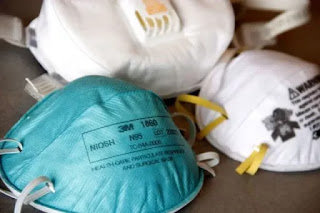About 2% of the world's population suffers from face blindness, or prosopagnosia, a neurological condition preventing people from recognizing faces. That's one person in every 50.
Even Brad Pitt said that he has a mild degree of face-blindness.
It is a cognitive disorder of face perception where the ability to recognize faces is impaired, while other aspects of visual processing (e.g., object discrimination) and intellectual functioning (e.g., decision making) remain intact. The term originally referred to a condition following acute brain damage (acquired prosopagnosia), but a congenital or developmental form of the disorder also exists, which may affect up to 2.5% of the population.
Whereas, Prosopamnesia , is a selective neurological impairment in the ability to learn new faces. There is a special neural circuit for the processing of faces as opposed to other non-face objects. Prosopamnesia is a deficit in the part of this circuit responsible for encoding perceptions as memories.
Prosopamnesia presents itself in patients as an inability to recognize people they have previously encountered based on their faces. In this way, it is very easily mistaken as prosopagnosia, which is an inability to perceive or recognize faces. Prosopagnosia is a deficit that occurs earlier in the neural circuit while the facial stimuli is being processed, whereas prosopamnesia takes effect when the brain attempts to encode the processed facial stimuli into memory. Because the distinction between prosopamnesia and prosopagnosia is so close in the neurological circuit, the only phenotypic difference between the two is in the breadth of faces to which a patients symptoms apply. Prosopagnosics cannot recognize faces, even of people within their own families over the span of a lifetime. Prosopamnesiacs show a memory for facial stimuli that they learned prior to the onset of their condition (in the case of acquired prosopamnesia) or for facial stimuli that they have encountered repeatedly for long periods of time (in the case of congenital prosopamnesia).
Prosopamnesia was first proposed as a distinct neurological disorder in 1996. There are currently only two diagnosed cases of prosopamnesia. This is likely due to the fact that it can easily be misdiagnosed as prosopagnosia based on symptoms.
To test yourself for prosopagnosia, the available tests are the JOV and the Cambridge Face Recognition test.
Do the Test online here :
Welcome to Cambridge Face Memory Test
In the following task you will be required to memorize the faces of different individuals. You will then be asked to identify a face you memorized out of a line-up of three faces. The test will begin with a very easy practice round and then will become progressively more challenging. Instructions will be given throughout the task, please follow them carefully. The test will take approximately 20 minutes to complete.
There are other tests too, like this one which shows you only the faces of Hollywood celebrities and US/UK politicians without any identifying hairline and finds your percentage. A normal person should recognise around 80% of those they are familiar with.
Take the Famous Faces Recognition test here.
On the other end of the spectrum are Super-Recognizers, who "never forget a face"
If you never forget a face, test yourself here. - Super Recogniser online test.
A related but different ability is the regnognition of emotion from eyes. Some people are better at it than others. Facial expressions are very hard to read for some others. You can test your ability to read emotions from faces here.
The Human Vision and Eye-Movement (HVEM) laboratory, University of British Columbia, Vancouver also conducts research into face-blindness and related disorders.
treatment of Prosopagnosia
Research has shown that Developmental Prosopagnosia improves with Oxytocin nasal spray.





No comments:
Post a Comment